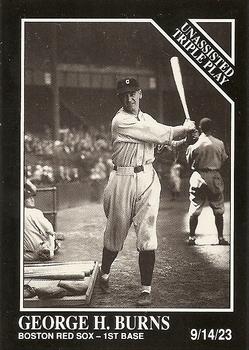September 14, 1923: Unassisted triple play by George Burns helps Red Sox defeat Cleveland in 12 innings
 George Henry Burns is not remembered as a stellar defensive first baseman.1 In 1923, as a member of the Boston Red Sox, the 30-year-old Burns, in his 10th season in the major leagues and eighth as a regular, was on his way to leading American League first basemen in errors for the fourth time.2 Known for his hitting, he was headed for his third consecutive season batting over .300.3
George Henry Burns is not remembered as a stellar defensive first baseman.1 In 1923, as a member of the Boston Red Sox, the 30-year-old Burns, in his 10th season in the major leagues and eighth as a regular, was on his way to leading American League first basemen in errors for the fourth time.2 Known for his hitting, he was headed for his third consecutive season batting over .300.3
But on September 14, 1923, in a game against the Cleveland Indians, it was Burns’s defense that earned him a spot in baseball lore. With the Red Sox leading, 2-0, in the second inning at Fenway Park, Burns snared a line drive and completed the third unassisted triple play in AL history.4 It was the first in the major leagues by a first baseman.5 Boston went on to a 4-3 victory in 12 innings.
Burns broke in with the Detroit Tigers as a 21-year-old in 1914. He also played for the Philadelphia Athletics before being traded to Cleveland in 1920. On the bench for the Indians in Game Five of the 1920 World Series, he watched teammate Bill Wambsganss turn an unassisted triple play.6 He was traded from the Indians to the Red Sox in December 1921.7
Since winning their third World Series in four seasons in 1918, the Red Sox had finished in the bottom half of the AL each season. In Burns’s first season, 1922, they continued their slide by coming in last in the eight-team league. Still struggling in 1923, they were 51-78 on September 14, in last place, 20 games behind the second-place Indians (71-58), who were 15½ games behind the New York Yankees.8 The Indians had finished first or second, four of the last five years.
A cold day with threatening weather held attendance to 2,500 at Fenway Park for the middle game of a three-game series.9 Boston had won the first game, coming from behind in the eighth inning to win, 9-8.
Forty-year-old spitballer Jack Quinn was pitching for the Red Sox. The right-hander was in his 13th major-league season – second with Boston.10 He had lost four of his last five decisions, dropping his record to 11-15 with a 4.15 ERA.
The Indians started 24-year-old rookie Joe Shaute. The lefty had made six starts in May and early June before being used almost exclusively in relief through August. Back as a starter in September, he was coming off two complete-game victories, raising his record to 6-5.
The Red Sox jumped on Shaute in the bottom of the first. With one out, catcher Val Picinich doubled to right. Center fielder Shano Collins knocked in Picinich with a single to left. The .328-hitting Burns – who had driven in three runs a day earlier, including the go-ahead run on an eighth-inning sacrifice fly – followed with a single to right, sending Collins to third. Joe Harris’ sacrifice fly to left scored Collins, and the Red Sox led, 2-0.
The Indians looked to bounce back in the second when Riggs Stephenson led off with a single to center and Rube Lutzke walked. Left-handed-hitting first baseman Frank Brower came to the plate. In the eighth inning of the previous day’s game, Brower, a strong pull hitter, hit his 15th home run.
Cleveland player-manager Tris Speaker called for a sacrifice. Brower had only two successful sacrifice bunts all season and had popped into a triple play attempting to bunt in June.11 He fouled off two bunt attempts.
With two strikes, Brower was swinging away.12 As field umpire Billy Evans noted in a syndicated newspaper column, usually teams had their first baseman hug the line when Brower was batting. But Burns, knowing that Quinn would be pitching Brower outside, stationed himself away from the first-base line.13
Brower managed to pull a line drive between first and second. The runners took off on what looked like a sure hit, but Burns, who would not have been near the ball had he been playing the line, made a sensational catch.14 According to the Cleveland Plain Dealer, “the force of the smash, literally turned him around.”15
Lutzke, running from first, turned back, but Burns was in his path. As the first baseman reached out to tag Lutzke, the runner dropped to the ground. Stooping to make the tag, Burns almost fell. He regained his balance and continued toward second, racing Stephenson, who was hustling back. Second baseman Norm McMillan was covering the bag, but Burns took it himself, sliding into the bag a split-second before Stephenson arrived to complete the unassisted triple play.16
Boston’s defense, which made the most errors in the AL in 1922 and would do the same in 1923, continued to aid Quinn in this game. In the third, with Steve O’Neill on first after walking, Shaute hit a deep fly that was turned into a double play by right fielder Ira Flagstead. “A sensational catch by Flagstead … and a lightning peg to first”17 that was relayed by McMillan erased the scoring chance.
The Indians threatened again in the fifth. With one out, Brower advanced to third on a throwing error by Collins after Brower’s double to short center. The scoring chance passed when McMillan threw Brower out at home on O’Neill’s grounder to second.
Cleveland finally broke through in the sixth. Homer Summa and Joe Sewell each singled, and Stephenson’s two-out single scored Summa.
With runners on first and second, Quinn couldn’t find the plate. He was proud of his ability to throw strikes, and once said, “I have developed a control that I think will rank as good as anybody’s in this circuit.”18 Not on this day – he hit Lutzke and walked Brower, Quinn’s third walk of the game, forcing in Sewell to tie the score, 2-2.
After the sixth, neither team reached second base until the Red Sox batted in the bottom of the ninth. Burns reached second with one out on his grounder to third that Lutzke threw away. Mike Menosky ran for Burns. After a walk to Harris, third baseman Howie Shanks lined to Stephenson, who beat Menosky to second for a double play.
The Indians had a chance to take the lead in the 10th. Left fielder Charlie Jamieson singled to right. A sacrifice and a groundout moved him to third with two outs. Sewell grounded the ball up the middle but was robbed of a hit by McMillan’s “superb stop,”19 keeping the game tied.
Cleveland broke on top in the 12th. O’Neill drew a leadoff walk and Glenn Myatt ran for him. Shaute was called on to sacrifice. Picinich fumbled his bunt and both men were safe. One out later, Summa, who came into the game batting .322,20 singled to center, scoring Myatt, and the Indians led, 3-2.
The 35-year-old Speaker, second on the Indians and fourth in the league in batting at .371, had hit over .300 in 12 of the last 13 seasons.21 He came through with a single to left. Menosky, who stayed in the game after pinch-running in the ninth, made a strong throw from deep left field that nipped the slow-running Shaute at the plate.22 Quinn finished off his 12th inning of work by getting Sewell to ground out, holding the Indians to one run.
Al DeVormer, pinch-hitting for Menosky, led off the bottom of the 12th with a double against the scoreboard in left. After an intentional walk to Harris, Shanks bunted and reached base when Lutzke threw low to first. With the bases loaded and no outs, Guy Morton relieved Shaute. The 30-year-old right-hander, making his 31st appearance, had been used both as a starter and reliever.
Flagstead had been picked up from Detroit in a trade early in the season23 and was hitting over .300 for the Red Sox.24 He was eight days shy of his 30th birthday. Flagstead had made several great defensive plays in the series, and he became the offensive hero by lining a game-ending single to left on Morton’s first pitch. DeVormer and Harris scored, giving Boston a 4-3 victory.25
Quinn finished the season 13-17. He was waived by Boston during the 1925 season but played with three more major-league teams after that. His major-league career ended when he was released by the Cincinnati Reds in July of 1933, a few days after turning 50.26
Burns finished 1923 batting .328 and was 10th in AL MVP voting. After the season, he was traded back to the Indians in a deal that exchanged unassisted-triple-play men, as Wambsganss was sent to Boston.27
With Cleveland, Burns was installed as the everyday first baseman, replacing Brower – the batter in Burns’s triple play. In 1926 Burns set a major-league season record for doubles, 64, and was voted the AL MVP. His 16-year career ended with a championship in 1929 with the Philadelphia Athletics.28
With a .307 career batting average and 444 doubles, Burns felt he deserved to be in the Hall of Fame,29 but as of 2025, none of the 16 players to turn an unassisted triple play have been enshrined.
- Learn more: Check out the SABR Triple Plays Database for details on all major-league triple plays since 1876
Acknowledgments
This article was fact-checked by Laura Peebles and copy-edited by Len Levin.
Photo credit: George Burns, Trading Card Database.
Sources
In addition to the sources cited in the Notes, the author consulted Baseball-Reference.com and Retrosheet.org.
https://www.baseball-reference.com/boxes/BOS/BOS192309140.shtml
https://www.retrosheet.org/boxesetc/1923/B09140BOS1923.htm
Notes
1 There were two players named George Burns whose playing careers overlapped. George Henry Burns was nicknamed Tioga; he had lived in Tioga, Pennsylvania. Primarily a first baseman, he played for five AL teams from 1914 to 1929, including two stints with the Cleveland Indians and Philadelphia Athletics. There was also outfielder George Joseph Burns, who played for three National League teams from 1911 to 1925.
2 Only once in his first eight seasons as a starter did Burns not rank first or second for most errors among AL first basemen.
3 Burns stretched his streak of .300 seasons to seven, 1921 to 1927.
4 Cleveland shortstop Neal Ball, July 19, 1909, was the first AL player to turn an unassisted triple play. It’s possible that there had also been one in the NL. On May 8, 1878, Paul Hines of the Providence Grays was involved in a triple play. Some accounts of the game credit Hines with all three putouts, and other reporting credits him with two putouts and an assist. As of 2025, Major League Baseball does not recognize the Hines triple play as unassisted, although MLB Historian John Thorn believes Hines should be credited with all three putouts according to the playing rules used at that time.
5 Four years after Burns’s unassisted triple play, Detroit Tigers first baseman Johnny Neun turned an unassisted triple play on May 31, 1927. As of 2025, they are the only two first basemen to complete unassisted triple plays.
6 In the fifth inning of Game Five, second baseman Wambsganss turned an unassisted triple play against the Brooklyn Dodgers. The Indians won the game, 8-1, and the Series, five games to two.
7 On December 20, Burns, Joe Harris, and Elmer Smith were traded for Stuffy McInnis.
8 The Yankees were headed to their third consecutive AL pennant. They played the New York Giants for the third straight year in the World Series and won their first-ever championship.
9 James C. O’Leary, “Burns Fourth Man to Kill Off Three Alone,” Boston Globe, September 15, 1923: 8.
10 According to Charles F. Faber, author of Quinn’s SABR Biography Project biography, there was some dispute about his age, and when asked, Quinn was evasive in answering. Charles F. Faber, “Jack Quinn,” SABR Biography Project, https://sabr.org/bioproj/person/jack-quinn/, accessed January 22, 2025. Quinn’s 13 seasons include two years pitching for Baltimore in the Federal League. As of 2025, baseball history references give Quinn’s date of birth as July 1, 1883, in a town in the Slovakian region of the Austro-Hungarian Empire. Lyle Spatz and Steve Steinberg, Comeback Pitchers: The Remarkable Careers of Howard Ehmke & Jack Quinn (Lincoln: University of Nebraska Press, 2021), 4.
11 On June 1, 1923, in the third inning of a game against the Tigers, with Wambsganss on second and Tris Speaker on first, Brower, attempting to bunt, popped into a 1-6-3 triple play.
12 Billy Evans, “Break of Luck Favored Burns in Triple Putout,” Springfield (Massachusetts) Evening Union, September 22, 1923: 9.
13 Evans.
14 Evans.
15 “Red Sox Triumph for Second Time,” Cleveland Plain Dealer, September 15, 1923: 14. The description in this article does not mention the two fouled bunt attempts. It has the play coming on the first pitch of the at-bat on a hit-and-run. James O’Leary’s account in the Boston Globe, does not mention any other pitch and the description corroborates the account by Evans that the runners ran when the ball was hit. The article by Evans has more detail than other accounts, and because Evans was on the field for the play, this article accepts his version of the play.
16 Evans. “Break of Luck Favored Burns in Triple Putout.”
17 “Red Sox Triumph for Second Time.”
18 Faber, “Jack Quinn.” Faber agrees with Quinn’s self-assessment of his control.
19 “Red Sox Triumph for Second Time.”
20 Summa hit .302 in his 10 major-league seasons.
21 Speaker would continue hitting over .300 through the 1927 season, giving him 18 of 19 seasons above .300. The year he fell below the mark, 1927, he hit .296. He was elected to the Hall of Fame in 1937.
22 “Red Sox Triumph for Second Time.”
23 In 1923 Flagstead had one plate appearance for Detroit before being traded on April 28 to the Red Sox for Ed Goebel.
24 Flagstead hit over .300 in three of his four full seasons with Detroit.
25 “Red Sox Triumph for Second Time.”
26 In 1934 Quinn pitched in six games for the Hollywood Stars in the Pacific Coast League. In 1935 he managed the Johnstown Johnnies in the Middle Atlantic League, making one pitching appearance, a two-inning scoreless relief stint.
27 On January 7, 1924, Burns was traded with Chick Fewster and Roxy Walters to the Indians for Dan Boone, Joe Connolly, O’Neill, and Wambsganss.
28 Burns was purchased by the Athletics from the Yankees on June 19, 1929. Backing up Jimmie Foxx, Burns played in 19 games at first base. He was 0-for-2 in his one game in the 1929 World Series.
29 Joseph Wancho, “George Burns,” SABR Biography Project, https://sabr.org/bioproj/person/george-burns, accessed January 20, 2025.
Additional Stats
Boston Red Sox 4
Cleveland Indians 3
Fenway Park
Boston, MA
Box Score + PBP:
Corrections? Additions?
If you can help us improve this game story, contact us.

